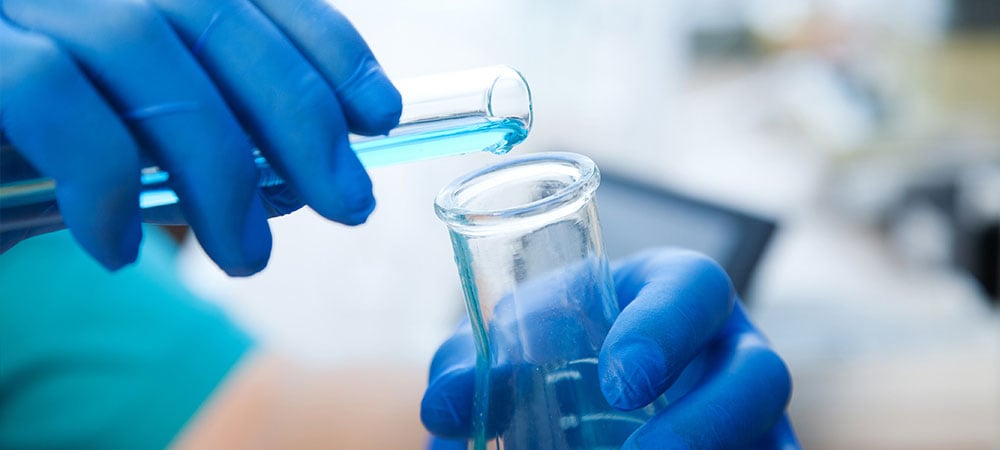
1,4-Dioxane
November 2021
Summary
1,4-Dioxane is a likely human carcinogen that contaminates drinking water in nearly every state across the country. Despite this widespread contamination, there is no federal standard limiting the levels of 1,4-dioxane in tap water. The EPA defined a concentration of 0.35 parts per billion, or ppb. as the amount of the chemical in water expected to cause no more than one additional case of cancer in every one million people who drink it for a lifetime.
EWG’s Tap Water Database shows that between 2013 and 2019, 90 million people received water contaminated with 1,4-dioxane. This contamination is due to 1,4-dioxane runoff from solvent production, industrial spills and discharges from municipal wastewater plants. 1,4-Dioxane is also found in many household products like laundry detergent, shampoos and cosmetics as a byproduct of manufacturing.
Click here to see the nationwide testing results for 1,4-dioxane.
Why is 1,4-dioxane found in tap water?
Since the 1950s, 1,4-dioxane has been used as a stabilizer in industrial solvents. According to a 2012 report from the Agency for Toxic Substances and Disease Registry, 1,4-dioxane is produced in the U.S. by Dow Chemical in Texas and Ferro Corp. in Louisiana. But because of prior use and disposal, it still contaminates many landfills across the country. Detergents and shampoos may also contain 1,4-dioxane as an impurity. Because wastewater treatment plants can’t remove it, effluent from these plants is an important additional source of 1,4-dioxane in surface water, as reported by in 2016 study by Mei Sun and Detlef Knappe of North Carolina State University.
1,4-Dioxane travels easily through soils to groundwater and surface water, and does not readily degrade, making contamination difficult to remediate. Conventional water treatment practices are not effective for removing 1,4-dioxane. Reducing 1,4-dioxane levels in tap water may require installation of additional and costly technologies.
Health effects
In animal studies, 1,4-dioxane in drinking water increased the incidence of liver, nasal cavity, peritoneal and mammary gland tumors. In 2013, the EPA reported that 1,4-dioxane is also carcinogenic by inhalation.
What amounts of 1,4-dioxane pose a health risk?
In 2013, the EPA classified 1,4-dioxane as a likely human carcinogen and defined a concentration of 0.35 parts per billion in tap water as the amount expected to cause no more than one additional case of cancer in 1 million people who drink it for a lifetime. But because there are no federal regulations limiting 1,4-dioxane in tap water, seven states have set their own criteria:
- California water utilities must notify state regulators if 1,4-dioxane is detected above 1 ppb.
- Colorado’s standard for 1,4-dioxane in groundwater is 0.35 ppb.
- Maine’s drinking water guideline for 1,4-dioxane is 4 ppb.
- Massachusetts’ non-enforceable drinking water guideline for 1,4-dioxane is 0.3 ppb.
- New Hampshire water utilities must report 1,4-dioxane at levels of 0.25 ppb and above.
- New Jersey’s groundwater quality standard is 0.4 ppb for 1,4-dioxane.
- North Carolina’s groundwater quality and surface water supply standards for 1,4-dioxane are 3 ppb and 0.35 ppb, respectively.
- New York set a first in the nation enforceable maximum contaminant limit of 1 ppb for 1,4 dioxane in drinking water.
What to do if your water contains 1,4-dioxane?
Home water filters such as carbon filters are not effective, but some reverse osmosis systems can remove a significant portion of 1,4-dioxane from drinking water. The most effective removal technologies are advanced oxidation methods that must be installed at the central water treatment plant. If you are concerned about 1,4-dioxane in your water, urge your utility to install effective treatment technologies.
References
Agency for Toxic Substances and Disease Registry. Public Health Statement for 1,4-Dioxane. 2012. Available at www.atsdr.cdc.gov/ToxProfiles/tp187-c1-b.pdf.
California Office of Environmental Health Hazard Assessment. 1,4-Dioxane Action Level. 1998. Available at oehha.ca.gov/media/downloads/water/chemicals/nl/pal14dioxan.pdf.
California State Water Resources Control Board. Drinking Water Notification Levels. 2015. Available at www.waterboards.ca.gov/drinking_water/certlic/drinkingwater/documents/notificationlevels/notificationlevels.pdf.
Colorado Department of Public Health and the Environment. Regulation No. 41: The Basic Standards for Ground Water (5 CCR 1002-41); Water Quality Control Commission. 2012. Available at www.sos.state.co.us/CCR/GenerateRulePdf.do?ruleVersionId=5034&fileName=5%20CCR%201002-41.
Environmental Protection Agency. Technical Fact Sheet - 1,4-Dioxane. 2014. Available at www.epa.gov/sites/production/files/2014-03/documents/ffrro_factsheet_contaminant_14-dioxane_january2014_final.pdf.
EPA. Toxicological Review of 1,4-Dioxane. In Support of Summary Information on the Integrated Risk Information System (IRIS). 2013. Available at cfpub.epa.gov/ncea/iris/iris_documents/documents/toxreviews/0326tr.pdf.
EPA. Superfund Site: Bally Ground Water Contamination, Bally, PA. Available at cumulis.epa.gov/supercpad/cursites/csitinfo.cfm?id=0301029.
Maine Department of Human Services. Maximum Exposure Guidelines (MEGs) for Drinking Water. 2016. Available at www.maine.gov/dhhs/mecdc/environmental-health/eohp/wells/documents/megtable2016.pdf.
Massachusetts Department of Environmental Protection. Standards and Guidelines for Contaminants in Massachusetts Drinking Waters. 2014. Available at www.mass.gov/eea/agencies/massdep/water/drinking/standards/standards-and-guidelines-for-drinking-water-contaminants.html#Guidelines.
New Hampshire Department of Environmental Services. Change in Reporting Limit for 1,4-Dioxane. 2011. Available at www.des.nh.gov/organization/divisions/waste/hwrb/sss/hwrp/documents/report-limits14dioxane.pdf.
New Jersey Department of Environmental Protection. Ground Water Quality Standard 1,4-Dioxane. 2015. Available at www.nj.gov/dep/wms/bears/docs/1,4%20dioxane%20final%20draft%20for%20posting2.pdf .
New York State Department of Health. Public Water Systems and NYS Drinking Water Standards for PFOA, PFOS and 1,4 Dioxane. Available at https://www.health.ny.gov/environmental/water/drinking/docs/water_supplier_fact_sheet_new_mcls.pdf .
North Carolina Department of Environmental Quality. North Carolina’s Surface Water Quality Standards. Available at deq.nc.gov/document/nc-stds-groundwater-02lstandards and deq.nc.gov/about/divisions/water-resources/water-resources-rules/nc-administrative-code-statutes.
D.K. Stepien et al. Fate of 1,4-Dioxane in the Aquatic Environment: From Sewage to Drinking Water. Water Research, 2014, 48:406–419.
M. Sun et al. Determination of 1,4-Dioxane in the Cape Fear River Watershed by Heated Purge-and-Trap Preconcentration and Gas Chromatography-Mass Spectrometry. Environmental Science & Technology, 2016, 50(5):2246–2254.
Water Research Foundation. 1,4-Dioxane White Paper. 2014. Available at www.waterrf.org/resources/StateOfTheScienceReports/1,4-dioxane.pdf.
